


News
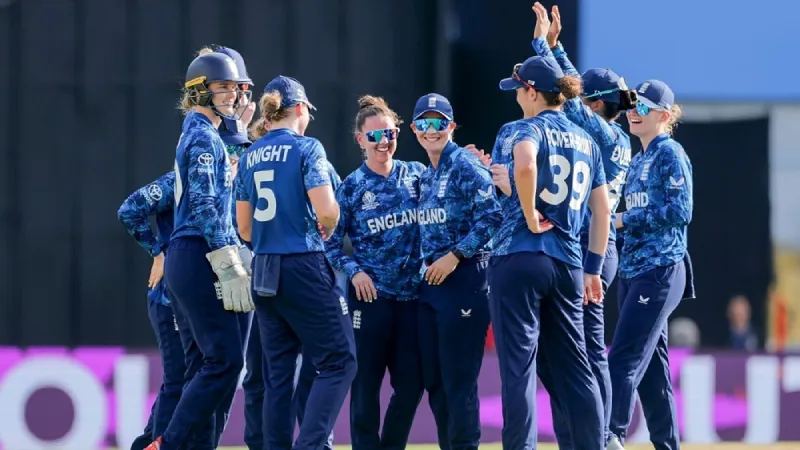
PUBLISHED ON: 22 OCT 2025, 09:37 AM
Two unbeaten giants. One black-soil batting paradise. And a hint of unfinished business. When Australia and England lock horns in Indore, it’s more than a World Cup group-stage clash; it’s a mood test. Australia arrived with their usual aura, but this time they’re missing their engine: Alyssa Healy, sidelined with a calf strain after back-to-back tons. England, meanwhile, is humming with quiet momentum, having just conquered India at the same venue and finally looking like a side that’s moved beyond the Ashes nightmare of early 2025.
Australia’s biggest problem isn’t talent, it’s timing. A six-day gap since their last outing means rust could creep into their usually ruthless rhythm. Healy’s injury isn’t just a selection change; it’s a psychological wobble. Her replacements, Georgia Voll and Phoebe Litchfield, bring promise but lack the intimidation factor that Healy projects at the top.
Captain Tahlia McGrath, who is still grappling with her own form with 43 runs in three innings, now has to contend with the extra pressure of leadership responsibility as well as batting performance. However, judging by her presentation, McGrath revels in responsibility – think of her all-round match-winning performances in the 2023 Ashes. This may well be the occasion when she will emerge from the slump and reassert herself, especially as she will be playing on a surface which favours the fluent stroke.
The England of 2025 is not the England that lost the Ashes 16–0. This side, reshaped by Charlotte Edwards’ brain and Nat Sciver-Brunt’s steel, finally looks like it believes its own potential. Their comeback win against India wasn’t flashy; it was gritty, mature cricket, the kind that signals cultural change more than scoreboard success.
But the Achilles’ heel remains obvious: the lower-middle order, where Nos. 5 to 7 average just 9.25. Against Australia’s bowling depth, Schutt, Brown, Gardner, and possibly Molineux, that weakness could turn fatal. Expect Sciver-Brunt to shield her lower order by anchoring longer and controlling tempo, something England have traditionally struggled with against Australia’s relentless middle-overs squeeze.
Let’s talk conditions. Indore’s black-soil pitch is flatter than a pancake, and both sides know it. The last England game here was a run-feast, and it’s hard to imagine anything different this time. Australia’s batting unit, even without Healy, remains a firepower festival. Perry, Mooney, Gardner, and Sutherland can each change the game within ten balls.
Yet, England’s Amy Jones might be the real disruptor. Reinstated as opener, she finally found fluency with a crisp half-century against India. “Riding the wave of ups and downs,” she called it, but now, with form and familiarity with the venue, she’s England’s best bet to blunt Australia’s new-ball burst.
And here’s the twist: Australia’s spinners have historically thrived on red soil; the black variant here might bring England’s Ecclestone and Dean into greater relevance. In a game where every edge counts, that subtle grip difference could decide who dominates the middle overs.
Every stat tells a story, and these scream rivalries.
It’s rare for one match to carry so many personal subplots. And that’s exactly why it feels like a final disguised as a formality.
England’s revival meets Australia’s reliability, and the outcome could redefine who really rules modern women’s cricket.
Because she sets the tone upfront, both through runs and intent. Her absence disrupts Australia’s early momentum.
Their lower-middle order, which has averaged under 10 in this tournament, is a glaring vulnerability against Australia’s depth.
The black-soil track will favour stroke-makers and possibly give England’s spinners more purchase than usual.
Disclaimer: The insights and analyses shared in this blog represent the author’s personal viewpoints and interpretations. Readers are encouraged to engage critically, explore diverse perspectives, and form their own conclusions.
Step into the action with Sports Live Hub—your all-access pass to the pulse of global sports. From live match coverage and expert opinions to trending stories and exclusive behind-the-scenes moments, we bring every play, player, and passion straight to your screen.
Stay connected. Stay competitive. Stay ahead—only on Sports Live Hub!

The Vienna Open 2025 delivered a thrilling mix of grit, skill, and drama, a showcase of how modern tennis continues to evolve. From the first serve to the final rally, the tournament captured everything fans love about the sport: comebacks, upsets, and moments that remind us why tennis is a battle of both mind and muscle.
This year’s edition wasn’t just another stop on the ATP calendar, it felt like a statement. A blend of established stars and rising contenders transformed the indoor courts of Vienna into a stage for excellence.
The Return of Indoor Dominance
The Vienna Open has always been known for its fast-paced indoor conditions, and in 2025, they played a crucial role once again. Players who thrived under pressure and adapted quickly to the low bounce and quick surface emerged as the stars of the week.
Jannik Sinner, in particular, proved once more that he’s becoming the king of indoor hard courts. His calm focus and tactical awareness set him apart, showing how modern tennis rewards intelligence as much as raw power.
Alexander Zverev, meanwhile, used his experience and precision to power through tough rounds, proving that consistency and control still matter in an age dominated by aggressive shot-making.
Jannik Sinner: The resurgence of a King
The story of the tournament belonged to Jannik Sinner. After dropping the first set in the final against Alexander Zverev, he clawed his way back to win 3-6, 6-3, 7-5.
What stood out was his ability to adjust mid-match. Sinner read Zverev’s patterns, tightened his groundstrokes, and used quick reactions to turn defense into attack. Even when fatigue and minor cramps set in during the final set, he refused to back down.
Alexander Zverev: Experience Meets Endurance
Runner-up Alexander Zverev may have fallen short in the final, but his journey through Vienna was equally impressive. With strong serving and deep baseline control, Zverev reminded fans that he remains one of the tour’s most dependable performers.
By reaching the Vienna final, he also secured his qualification for the season-ending ATP Finals, an achievement that highlights his consistency throughout 2025.
Andrey Rublev: Passion and Pressure
Not every story in Vienna was about triumph. Andrey Rublev’s first-round exit to Cameron Norrie (6-2, 6-7 (5-7), 6-2) made headlines for both his play and his frustration. After a tense tiebreak loss in the second set, Rublev’s emotions boiled over, resulting in a racket smash and a code violation. His defeat was a reminder that in tennis, composure can be as important as technique.
Alex de Minaur: The Fighter’s Spirit
Australia’s Alex de Minaur had another strong run, reaching the semi-finals before falling to Sinner in straight sets. Known for his speed and tenacity, De Minaur once again showed that effort and smart movement can trouble even the biggest hitters.
Although he couldn’t overcome Sinner’s precision, his tournament run reinforced his growing consistency on the ATP Tour. For a player once seen as a defensive specialist, De Minaur’s evolving offensive game is now making him a genuine contender in major indoor events.
The Rise of Indoor Specialists
One of the biggest takeaways from Vienna was how indoor specialists are shaping the modern game. The faster courts rewarded players who take initiative early in rallies, attack second serves, and handle pressure with calm precision.
Sinner’s title run, Zverev’s deep push, and De Minaur’s steady performance all showed that mastering indoor conditions. The Vienna Open 2025 reminded the tennis world that indoor tournaments can be just as demanding, unpredictable, and exciting as the Grand Slams themselves.
Global Buzz and Fan Energy
Off the court, Vienna delivered one of the best fan experiences of the ATP season. The energy inside the Wiener Stadthalle was electric, from local fans cheering for every long rally to the global audience tuning in online.
The tournament also showed how tennis is connecting with younger audiences. Social media clips of long rallies, emotional reactions, and behind-the-scenes moments trended worldwide.
Key Takeaway
The Vienna Open 2025 captured the essence of modern tennis, fast, emotional, and fiercely competitive. It wasn’t just about who won, but how they played. From Sinner’s resilience to Zverev’s steadiness and De Minaur’s grit, the tournament showed that the next chapter of tennis will be written by players who combine intelligence, heart, and innovation.
FAQs
Jannik Sinner defeated Alexander Zverev 3-6, 6-3, 7-5 to claim the title.
It’s an indoor hard-court tournament, known for its fast pace and low bounce.
A mix of veteran resilience and new-generation brilliance. The final between Sinner and Zverev was one of the most intense matches of the year.
Alex de Minaur reached the semi-finals, showing excellent form, while Cameron Norrie produced one of the biggest upsets by defeating Andrey Rublev in the opening round.
Sinner and Zverev head into the ATP Finals with strong momentum, while De Minaur continues to climb the rankings ahead of the 2026 season.
14 hours ago
Read More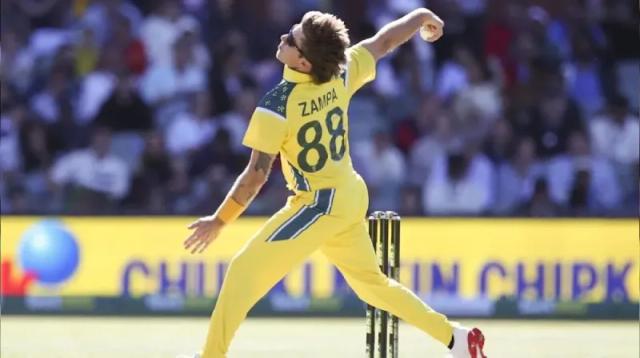
Bangladesh cricket has always been known for its fighting spirit — but recently, bowling order strategy has become a key talking point among fans and analysts.
Thanks to Sports Live Hub’s LiveStream Analysis, Bangladeshi cricket fans now get a deeper look at the thinking behind each bowling change, rotation, and tactical adjustment during matches. From powerplay decisions to death-over strategies, this digital platform is helping fans understand why captains make certain calls — and how those choices can shape the outcome of a game.
LiveStream Analysis: Bringing Tactics Closer to Fans
Sports Live Hub’s LiveStream Analysis transforms regular cricket watching into a tactical experience. During live matches, fans don’t just see bowling changes — they understand them. With real-time visuals, commentary, and on-screen graphics, the platform explains why certain bowlers are used at key moments or why field placements shift strategically. This helps Bangladeshi fans grasp the reasoning behind every move, like when to unleash spin or hold a pacer for the death overs. The interactive analysis bridges the gap between the captain’s strategy and the viewer’s curiosity, turning every game into a learning experience. For fans, it’s not just watching cricket anymore — it’s understanding it deeply.
Understanding Bowling Order Strategy
In modern cricket, the bowling order is about more than just skill — it’s a strategic puzzle.
For Bangladesh, captains like Litton Das and Soumya Mehidy Hasan Miraz often mix up bowlers based on pitch conditions, match situations, and opposition line-ups.
Here’s what Sports Live Hub’s analysis reveals:
Each decision reflects a pre-planned pattern that fans can now follow easily thanks to Sports Live Hub’s detailed breakdowns.
How Data Changes the Game
Sports Live Hub uses advanced metrics such as:
This helps viewers understand not just what happens, but why it happens — a major step forward for cricket analysis in Bangladesh.
Empowering Bangladeshi Cricket Fans
Cricket fans in Bangladesh are known for their passion, and Sports Live Hub has tapped into that energy by offering interactive insights during livestreams.
Users can join discussions, predict bowling rotations, and analyze match moments in real-time.
It’s not just watching cricket anymore — it’s participating in strategic thinking, making the fan experience richer and more engaging.
Conclusion
Sports Live Hub’s LiveStream Analysis has redefined how Bangladeshi fans experience cricket. By explaining the bowling order strategy with clarity and data-driven insight, it bridges the gap between on-field tactics and fan understanding.
As Bangladesh’s bowlers continue to evolve, platforms like Sports Live Hub ensure every delivery is not just seen — but understood.
Q1. Does Sports Live Hub offer LiveStream analysis for Bangladesh cricket?
Yes! SLH provides real-time LiveStream insights, Live Scores, and strategic updates during Bangladesh cricket matches.
Q2. Can I watch Bangladesh cricket LiveStream for free?
Absolutely — enjoy free LiveStream and Live Score coverage on Sports Live Hub.
Q3. Why is bowling order analysis useful for fans?
It helps fans understand strategy, bowler selection, and match momentum in real time.
Q4. Is the analysis available for all formats of cricket?
Absolutely. Sports Live Hub provides detailed analysis for ODIs, T20s, and Test matches, giving fans insights across all levels of play.
14 hours ago
Read More
This holiday season, there’s no better way to enjoy the festivities than with LiveStream action and Live Score updates from all your favorite sports. Whether you’re gathered around the Christmas tree or relaxing by the fireplace, Sports Live Hub (SLH) brings you real-time sports excitement from around the world. Whether you’re a cricket fan, football follower, basketball enthusiast, tennis supporter, or Formula 1 aficionado, SLH allows you to watch every second live and follow Live Score updates anytime, anywhere.
Football: A Global Christmas Kickoff
Football fans, rejoice! SLH provides LiveStream coverage of top leagues and tournaments, including:
●Premier League – Festive fixtures and live matches.
●UEFA Champions League – Europe’s elite clubs in action.
●La Liga – Spanish football at its best.
●Major League Soccer (MLS) – North America’s top league.
Stay updated with Live Scores, team lineups, and in-depth match statistics. From last-minute goals to penalty shootouts, SLH ensures you never miss a moment.
Cricket: A Yuletide Tradition
Cricket enthusiasts can celebrate Christmas with LiveStream action from major tournaments, including:
●ICC T20 World Cup – The world’s top teams in action.
●Asia Cup – Thrilling matches from top Asian nations.
●Indian Premier League (IPL) – India’s premier league excitement.
Get every boundary, wicket, and run live, alongside Live Score updates, player statistics, and expert commentary, making every match a festive highlight.
Other Sports: A Festive Feast for All Fans
SLH doesn’t stop at football and cricket. Enjoy LiveStream matches and Live Score updates for:
●Basketball – NBA and international competitions.
●Tennis – Grand Slam and ATP/WTA tournaments.
●Badminton – BWF top-tier matches.
●Boxing & MMA – Latest fights and bouts.
●Golf – PGA Tour events and major championships.
●Other Sports – Ice hockey, volleyball, rugby, and more.
No matter your favorite sport, SLH ensures you stay connected with real-time action and Live Scores across all competitions.
Why Choose Sports Live Hub This Christmas?
●LiveStream Access: Watch football, cricket, basketball, tennis, Formula 1, and more live.
●Real-Time Updates: Stay informed with Live Scores, stats, and highlights.
●Multi-Sport Coverage: From major leagues to niche competitions, SLH has it all.
●Mobile-Friendly: Enjoy LiveStream and Live Score updates on the move.
●Global Reach: Access content from Bangladesh, Nepal, India, Brazil, Philippines, Vietnam, Pakistan, and beyond.
SLH is your go-to destination this Christmas to stay informed, engaged, and connected to the world of sports.
Frequently Asked Questions (FAQ)
1. What is Sports Live Hub?
SLH is a top platform for LiveStream sports, Live Score updates, and real-time coverage of football, cricket, basketball, tennis, and more.
2. Is Sports Live Hub free?
Yes! Enjoy LiveStream matches and Live Score updates completely free.
3. What sports can I LiveStream?
Football, cricket, basketball, tennis, Formula 1, and other international competitions.
4. How real-time are the Live Scores and updates?
All Live Scores and updates are in real-time, so you never miss any action.
5. Can I watch multiple sports at once?
Yes! SLH allows you to follow several LiveStream matches live simultaneously with scores.
6. Is SLH mobile-friendly?
Absolutely! The site is fully optimized for LiveStream and Live Score updates on mobile.
7. Can I access SLH globally?
Yes, SLH provides LiveStream coverage and Live Score updates worldwide, including Bangladesh, Nepal, India, Brazil, the Philippines, Vietnam, and Pakistan.
19 hours ago
Read More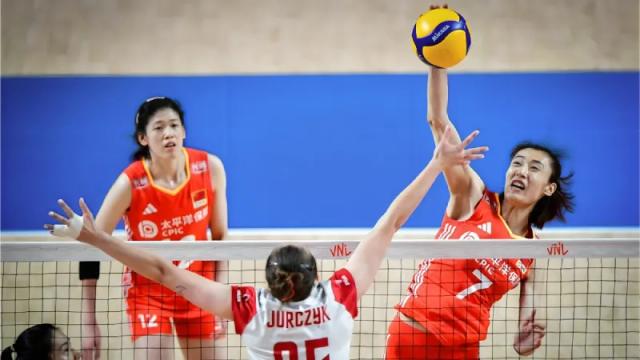
Volleyball in 2025 has become faster, more strategic, and more global than ever before. With emerging talents from all corners of the world, a new generation of stars is reshaping the sport and inspiring millions. These young athletes aren’t just playing the game. They’re redefining how it’s played, blending athleticism, innovation, and flair in a way that keeps fans on the edge of their seats.
The current generation of volleyball players stands out for their explosive style and technical mastery. Young athletes have benefitted from advanced training methods, data analytics, and early exposure to professional competition. Whether it’s men’s or women’s volleyball, the 2025 landscape is full of rising stars ready to lead their countries into a new era.
Among the standout names, Adis Lagumdzija of Turkey has become one of the most dominant opposite hitters in men’s volleyball. His combination of height, power, and agility has made him a nightmare for blockers. On the women’s side, Melissa Vargas of Türkiye and Zehra Güneş continue to amaze fans worldwide with their athletic prowess and leadership on the court.
In Asia, Junya Nishida of Japan remains one of the most electrifying players, known for his dynamic serves and vertical jump. Meanwhile, the Philippines, riding high on hosting the 2025 FIVB Men’s World Championship, has seen young players like Bryan Bagunas and Marck Espejo gain international attention, signaling Southeast Asia’s growing impact on the sport.
One of the most exciting developments in 2025 is volleyball’s increasing global reach. No longer dominated by a few nations, the sport is flourishing across new regions. Teams from the United States, Poland, Brazil, Japan, and Italy continue to thrive, but emerging programs in countries like Vietnam, the Dominican Republic, and Canada are producing world-class athletes.
Social media has played a big role in this growth. Platforms like TikTok and Instagram have turned volleyball highlights into viral sensations, giving younger fans direct access to their idols. The result is a sport that’s more connected and fan-driven than ever before.
Today’s players are rewriting the playbook. The new generation brings versatility—outside hitters who can play multiple positions, setters who act like playmakers, and liberos who double as defensive strategists. With the rise of sports science, players now train for precision as much as power.
Modern volleyball emphasizes adaptability. Coaches are using real-time analytics to adjust strategies mid-game, while athletes rely on wearable technology to monitor performance. The result is faster rallies, tighter defense, and more explosive attacks—an evolution that keeps audiences glued to every point.
Beyond their athletic achievements, this new generation represents a cultural shift. Many of these athletes are outspoken advocates for inclusion, equality, and mental health awareness. Stars like Paola Egonu, Jordan Larson, and Earvin N’Gapeth use their platforms to inspire the next wave of athletes to play with passion and purpose.
Their stories show that volleyball is not just a sport, it’s a movement that transcends borders and unites people through teamwork, perseverance, and respect.
As volleyball heads into the latter half of the decade, the future looks brighter than ever. With younger athletes pushing boundaries and federations investing in youth programs, the sport is primed for a new golden era. The 2025 World Championships, set in the Philippines for men and in Italy for women, will showcase this new generation’s brilliance on the global stage.
Fans can expect record-breaking performances, dramatic upsets, and unforgettable moments that define the future of volleyball. What’s clear is that this new wave of players is not just carrying the torch, they’re lighting a new path forward.
The new generation of volleyball stars in 2025 embodies speed, skill, and innovation. From Asia to Europe and the Americas, these athletes are revolutionizing the game with their athletic excellence and global influence. Their rise marks a bold new chapter for volleyball. One defined by diversity, technology, and passion.
A1: Players like Melissa Vargas, Adis Lagumdzija, Zehra Güneş, and Junya Nishida are leading the new generation, while rising Filipino stars like Bryan Bagunas and Marck Espejo are gaining international attention.
A2: Advanced analytics, video review systems, and wearable tech help players track performance, improve training efficiency, and enhance in-game strategy.
A3: Beyond traditional giants like Brazil, Italy, and the US, nations such as Japan, Türkiye, and the Philippines are rapidly growing in global prominence.
A4: They combine athleticism with intelligence, versatility, and social awareness, making them not just athletes but ambassadors for the sport’s evolution.
A5: Fans can follow players on social media, watch international tournaments like the Volleyball Nations League and World Championships, and support local leagues that nurture emerging talent.
Disclaimer: The insights and analyses shared in this blog represent the author’s personal viewpoints and interpretations. Readers are encouraged to engage critically, explore diverse perspectives, and form their own conclusions.
Step into the action with Sports Live Hub—your all-access pass to the pulse of global sports. From live match coverage and expert opinions to trending stories and exclusive behind-the-scenes moments, we bring every play, player, and passion straight to your screen.
Stay connected. Stay competitive. Stay ahead—only on Sports Live Hub!
6 days ago
Read More
Table tennis, long considered a fast-paced but casual sport, has undergone a transformation in 2025. The modern game is now a showcase of precision, agility, and high-octane action. With technological advancements in equipment, innovative training methods, and a new generation of players, table tennis has evolved into a sport that demands both physical excellence and strategic intelligence.
Speed has become the hallmark of modern table tennis. Today’s top players consistently execute shots at velocities that were unimaginable a decade ago. With new rubber technologies, lighter yet stronger paddles, and improved ball materials, rallies have become faster and more intense. Matches now often feature lightning-quick exchanges where players must react within fractions of a second.
This increase in speed has elevated both the excitement for spectators and the demands on players. Reaction time, footwork, and anticipation are critical, as one slight hesitation can turn a potential winner into a missed opportunity. Coaches now focus heavily on reflex training, including high-speed drills and reaction sensors, to prepare players for the pace of 2025’s competitive environment.
Alongside speed, spin has taken on a central role in redefining modern table tennis. Spin is no longer just a defensive tool; it is a weapon that can dictate the flow of a match. Top players manipulate topspin, backspin, and sidespin to create unpredictable ball trajectories that challenge opponents’ timing and positioning.
Modern paddles, with advanced rubber technology, amplify spin potential, allowing players to execute complex serves and deadly loops. Training now emphasizes reading spin patterns, adjusting racket angles in milliseconds, and anticipating opponent strategies. In 2025, the best players are as much masters of deception as they are of raw speed.
Modern table tennis demands more than physical prowess—it requires acute tactical thinking. Players analyze opponents using data analytics and AI-driven match simulations to develop tailored strategies. This approach transforms each match into a chess-like battle, where each stroke has a purpose beyond simply hitting the ball.
Additionally, players’ footwork, positioning, and stamina have improved dramatically due to advanced conditioning programs. Coaches incorporate agility ladders, plyometric exercises, and biomechanical analysis to optimize movement efficiency and reduce injury risk.
The combination of speed, spin, and strategic play has resulted in matches that are not only physically thrilling but intellectually stimulating. Fans now witness contests where milliseconds and millimeters can determine victory or defeat, elevating table tennis from a recreational pastime to a high-performance spectacle.
The 2025 table tennis scene is also being shaped by technology. Smart tables with sensors, high-speed cameras, and AI analytics provide players with real-time performance feedback. Equipment innovations, such as precision-engineered balls and customized blades, allow players to fine-tune their style and adapt mid-match.
Furthermore, live streaming and enhanced broadcast graphics have brought table tennis to a global audience, making the sport more accessible and visually captivating than ever before.
Modern table tennis in 2025 is faster, more complex, and more dynamic than ever before. Players combine speed, spin, and strategic thinking in ways that push the boundaries of skill and athleticism. With technological advancements and innovative training methods, the sport has evolved into a thrilling global spectacle that continues to captivate fans and challenge athletes worldwide.
A: Top-level rallies often reach speeds exceeding 100 km/h, requiring lightning-fast reflexes and precision.
A: Spin is used strategically to control ball trajectory, deceive opponents, and create openings for attacking shots.
A: Modern training emphasizes reflex drills, agility, data analytics, AI-assisted strategy planning, and biomechanical optimization.
A: Innovations include sensor-equipped tables, AI match analysis, advanced rubber paddles, and precision-engineered balls.
A: Data-driven insights and advanced coaching techniques have made strategy a critical part of gameplay, turning matches into tactical battles as well as physical contests.
Disclaimer: The insights and analyses shared in this blog represent the author’s personal viewpoints and interpretations. Readers are encouraged to engage critically, explore diverse perspectives, and form their own conclusions.
Step into the action with Sports Live Hub—your all-access pass to the pulse of global sports. From live match coverage and expert opinions to trending stories and exclusive behind-the-scenes moments, we bring every play, player, and passion straight to your screen.
Stay connected. Stay competitive. Stay ahead—only on Sports Live Hub!
1 week ago
Read More
The Premier League is witnessing a remarkable transformation in 2025. Gone are the days when experience alone dictated dominance on the pitch. Today, the league belongs to a new breed of footballers.Young, fearless, and technically gifted. From Arsenal’s midfield prodigies to Manchester United’s rising stars, English football is experiencing a youth-driven evolution that’s reshaping the sport’s identity.
This season, the Premier League has seen an unprecedented rise in players under 23 taking center stage. Arsenal’s Ethan Nwaneri, Manchester City’s Oscar Bobb, and Liverpool’s Ben Doak have become household names. They’re not just filling gaps in squads, they’re defining their teams’ playing styles.
Clubs that once relied on big-money veteran signings are now turning to academy graduates and young transfers. This shift isn’t accidental, it’s strategic. Modern football demands pace, pressing, and adaptability, traits often found in youthful legs and fearless minds. Managers like Mikel Arteta and Ange Postecoglou have embraced this trend, trusting younger players to deliver on the biggest stages.
What makes this youth movement so powerful isn’t just the number of young players breaking through, but their impact on the culture of football itself. The new generation approaches the game with creativity, confidence, and mental toughness far beyond their years.
Social media, sports science, and advanced coaching have all played a part. Today’s teenagers grow up studying professional-level analytics and training with cutting-edge technology. They understand the importance of recovery, nutrition, and tactical intelligence at a younger age. As a result, they enter top-flight football better prepared than ever before.
Clubs are also reaping the rewards of investing heavily in youth academies. Arsenal’s Hale End, Chelsea’s Cobham, and Manchester City’s Etihad Campus continue to produce talent that not only fits their systems but also holds strong resale value. It’s a model that combines sporting success with financial sustainability, the future of modern football management.
While youth is driving much of the Premier League’s excitement, experience still plays a crucial role. Veterans like Kevin De Bruyne, Mohamed Salah, and Son Heung-min act as mentors for the next generation, guiding them through the highs and lows of elite competition.
The perfect balance between youth and experience is what separates the great teams from the good ones. Clubs like Arsenal and Manchester City have mastered that equilibrium, building squads that combine youthful energy with veteran leadership.
The Premier League’s youth revolution is setting an example for leagues around the world. Young English and European players are now commanding global attention, while clubs in other countries are adopting similar development-focused strategies.
In the past, England was criticized for not producing enough homegrown talent. That narrative has flipped. With stars like Kobbie Mainoo, Levi Colwill, and Cole Palmer shining, English football’s future looks brighter than ever, and its influence is spreading beyond domestic borders.
As the 2025–26 season progresses, one thing is clear, the Premier League’s identity is being redefined by its youth. These players aren’t just the future, they’re the present. Their hunger, speed, and tactical intelligence are pushing the boundaries of what fans expect from the game.
If this momentum continues, the next generation of footballers could usher in an era of dominance for English clubs across Europe. The challenge for managers will be maintaining balance developing young stars without overwhelming them too soon.
The new era has begun, and it’s led by the fearless youth who play not just to win, but to inspire.
The Premier League is undergoing a generational shift powered by young talent. Clubs investing in youth development and giving opportunities to emerging players are setting the tone for success, both domestically and globally. This youth-driven evolution marks a thrilling new chapter for English football.
Arsenal, Manchester City, and Chelsea have been at the forefront, producing top-tier young talent through their academies and smart scouting.
Ethan Nwaneri (Arsenal), Cole Palmer (Chelsea), and Kobbie Mainoo (Manchester United) have all impressed with their maturity and performances.
Clubs now use data-driven coaching, better facilities, and advanced analytics to nurture young players, preparing them earlier for top-flight football.
Absolutely. As financial fair play pressures increase, clubs are prioritizing sustainable growth through youth development rather than relying solely on expensive transfers.
Disclaimer: The insights and analyses shared in this blog represent the author’s personal viewpoints and interpretations. Readers are encouraged to engage critically, explore diverse perspectives, and form their own conclusions.
Step into the action with Sports Live Hub—your all-access pass to the pulse of global sports. From live match coverage and expert opinions to trending stories and exclusive behind-the-scenes moments, we bring every play, player, and passion straight to your screen.
Stay connected. Stay competitive. Stay ahead—only on Sports Live Hub!
1 week ago
Read More
In the electrifying world of football, every goal, every pass, and every game-changing moment matters. Fans want to be part of the action — not just watch it later. That’s why Sports Live Hub has become the go-to destination for football lovers around the globe.
By providing high-quality LiveStream access, real-time Live Score updates, and instant match alerts, SLH empowers fans to stay connected to the pitch — anytime, anywhere. Whether it’s a heated derby match, a Champions League knockout clash, or a World Cup thriller, Sports Live Hub ensures you’re always right where the action is — LIVE.
Sports Live Hub offers exclusive access to top-tier football from around the world, including:
✅ Premier League
✅ UEFA Champions League
✅ La Liga
✅ Serie A
✅ Bundesliga
✅ MLS & more worldwide leagues
From powerhouse clubs to rising underdogs — SLH brings the ultimate fan experience with LiveStream services that make football more thrilling than ever.
Whether you’re on mobile, tablet, or desktop, SLH ensures you never miss a match highlight with:
✨ Instant Live Score updates
📊 Real-time stats and insights
🏟 Live match commentary
📰 Football breaking news
Every second counts — and Sports Live Hub delivers the numbers as they happen.
Football passion doesn’t wait — and neither should you.
SLH is built for fans on the go, giving you:
From Dhaka to Delhi, Manila to São Paulo — football travels with you.
Feature What You Get
Free LiveStream Access -No subscription required
Multi-League Coverage -Matches from worldwide competitions
Real-Time Scores -Always up-to-date with zero delay
User-Friendly Experience -Seamless navigation for quick access
Fan-Driven Updates -Breaking stories & match insights
Sports Live Hub doesn’t just stream football — it connects fans to every emotional moment.
Yes! Enjoy free LiveStreams and Live Scores for major football matches.
Absolutely — you can watch LiveStreams from any smartphone or device.
Premier League, Champions League, La Liga, and many more — all live with real-time updates.
Disclaimer: The insights and analyses shared in this blog represent the author’s personal viewpoints and interpretations. Readers are encouraged to engage critically, explore diverse perspectives, and form their own conclusions.
Step into the action with Sports Live Hub—your all-access pass to the pulse of global sports. From live match coverage and expert opinions to trending stories and exclusive behind-the-scenes moments, we bring every play, player, and passion straight to your screen.
Stay connected. Stay competitive. Stay ahead—only on Sports Live Hub!
1 week ago
Read More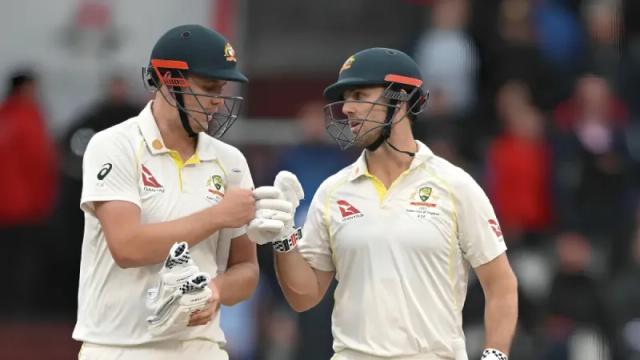
Cricket has a funny way of keeping even its stars guessing. Mitchell Marsh, once sidelined from Test cricket after a lean patch, now teeters on the edge of an Ashes recall, riding a purple patch in white-ball formats. In his last ten limited-overs innings, Marsh has racked up 555 runs—a tally that even the strictest selectors can’t ignore. Meanwhile, Usman Khawaja is quietly championing his Queensland teammate Matt Renshaw as the ideal opening foil. With the Ashes looming in Perth, Australia faces a conundrum: trust Marsh’s explosive form, gamble on a White-ball to red-ball transition, or stick with the tried-and-tested Shield performers.
Andrew McDonald has spoken about how good Marsh’s batting is at the moment and that Marsh “hasn’t played like this for some time.” Marsh’s performance of 555 runs in 10 innings between ODIs and T20Is indicates the confidence and timing he had before his career setback and could be key in Perth, where there are many big boundaries to hit; however, the pitch in Perth will reward controlled and timed shots. Selectors have made successful bets when white ball performances have transferred into test cricket, but selecting Marsh will require careful management to prevent him from having another dip similar to what happened at Headingley.
Khawaja’s backing for Renshaw is clearly not just a friendship endorsement; rather, Khawaja believes that Renshaw’s recent one-day batting displays are reflective of someone who remains calm under the pressure of batting. His Test match 184 against South Africa in 2016 also demonstrated he can play a big score as well as make runs in all formats of the game. Additionally, while Sam Konstas is currently holding the spot, his struggles in Shield cricket this season strengthen Renshaw’s case for selection. There is no doubt about what the tactical question is: will the Australian team support experience with the bat in Marsh or support consistent batting with the bat in Renshaw so that the team can build on its top order? Teams historically have been able to create platforms through which they could withstand both pace and swing by having a stable left-right opening combination (i.e., Hayden and Langer in 2005).
McDonald’s insight illustrates an increasingly common dilemma of today: the clash of commitments of white ball cricket and preparation for red ball cricket. As captain of the Australian men’s national side, Marsh will likely need to fit in as many Sheffield Shield matches as possible between his upcoming T20i and test match commitments. With only two rounds of Shield matches scheduled to take place before Australia’s first Ashes test, there isn’t much room for error. Therefore, Marsh faces a tactical decision: Is it better to be a half-ready “star” player or a fully ready “specialist” player? There are numerous examples from cricket history of when players were rushed back into the test side to produce brilliance, but also numerous examples of spectacular failures.
The Australian opening conundrum is so much more than a selection problem. It is reflective of the format-based competition in modern cricket. The temptation to select Marsh, with his potentially high reward batting performance, is at odds with Renshaw’s ability to provide consistent, reliable, and mentally supportive Shield performances, which provide a solid foundation. A decision that may ultimately decide how well Australia begins their Ashes campaign and therefore possibly determine the overall outcome of the series.
Australia’s Ashes opening hinges on balancing Marsh’s explosive white-ball form with Renshaw’s Test-ready reliability.
His 555 runs in the last 10 white-ball innings demonstrate form and timing the selectors can’t ignore.
Renshaw’s consistent one-day performances and past Test success make him a reliable opening option.
Limited Sheffield Shield rounds before the first Test create a narrow window for him to transition from white-ball to red-ball cricket.
Disclaimer: The insights and analyses shared in this blog represent the author’s personal viewpoints and interpretations. Readers are encouraged to engage critically, explore diverse perspectives, and form their own conclusions.
Step into the action with Sports Live Hub—your all-access pass to the pulse of global sports. From live match coverage and expert opinions to trending stories and exclusive behind-the-scenes moments, we bring every play, player, and passion straight to your screen.
Stay connected. Stay competitive. Stay ahead—only on Sports Live Hub!
1 week ago
Read More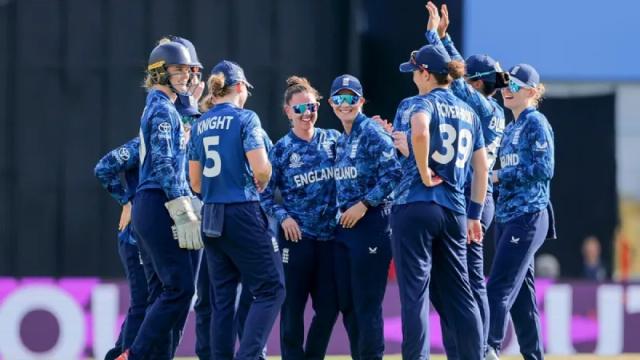
Two unbeaten giants. One black-soil batting paradise. And a hint of unfinished business. When Australia and England lock horns in Indore, it’s more than a World Cup group-stage clash; it’s a mood test. Australia arrived with their usual aura, but this time they’re missing their engine: Alyssa Healy, sidelined with a calf strain after back-to-back tons. England, meanwhile, is humming with quiet momentum, having just conquered India at the same venue and finally looking like a side that’s moved beyond the Ashes nightmare of early 2025.
Australia’s biggest problem isn’t talent, it’s timing. A six-day gap since their last outing means rust could creep into their usually ruthless rhythm. Healy’s injury isn’t just a selection change; it’s a psychological wobble. Her replacements, Georgia Voll and Phoebe Litchfield, bring promise but lack the intimidation factor that Healy projects at the top.
Captain Tahlia McGrath, who is still grappling with her own form with 43 runs in three innings, now has to contend with the extra pressure of leadership responsibility as well as batting performance. However, judging by her presentation, McGrath revels in responsibility – think of her all-round match-winning performances in the 2023 Ashes. This may well be the occasion when she will emerge from the slump and reassert herself, especially as she will be playing on a surface which favours the fluent stroke.
The England of 2025 is not the England that lost the Ashes 16–0. This side, reshaped by Charlotte Edwards’ brain and Nat Sciver-Brunt’s steel, finally looks like it believes its own potential. Their comeback win against India wasn’t flashy; it was gritty, mature cricket, the kind that signals cultural change more than scoreboard success.
But the Achilles’ heel remains obvious: the lower-middle order, where Nos. 5 to 7 average just 9.25. Against Australia’s bowling depth, Schutt, Brown, Gardner, and possibly Molineux, that weakness could turn fatal. Expect Sciver-Brunt to shield her lower order by anchoring longer and controlling tempo, something England have traditionally struggled with against Australia’s relentless middle-overs squeeze.
Let’s talk conditions. Indore’s black-soil pitch is flatter than a pancake, and both sides know it. The last England game here was a run-feast, and it’s hard to imagine anything different this time. Australia’s batting unit, even without Healy, remains a firepower festival. Perry, Mooney, Gardner, and Sutherland can each change the game within ten balls.
Yet, England’s Amy Jones might be the real disruptor. Reinstated as opener, she finally found fluency with a crisp half-century against India. “Riding the wave of ups and downs,” she called it, but now, with form and familiarity with the venue, she’s England’s best bet to blunt Australia’s new-ball burst.
And here’s the twist: Australia’s spinners have historically thrived on red soil; the black variant here might bring England’s Ecclestone and Dean into greater relevance. In a game where every edge counts, that subtle grip difference could decide who dominates the middle overs.
Every stat tells a story, and these scream rivalries.
It’s rare for one match to carry so many personal subplots. And that’s exactly why it feels like a final disguised as a formality.
England’s revival meets Australia’s reliability, and the outcome could redefine who really rules modern women’s cricket.
Because she sets the tone upfront, both through runs and intent. Her absence disrupts Australia’s early momentum.
Their lower-middle order, which has averaged under 10 in this tournament, is a glaring vulnerability against Australia’s depth.
The black-soil track will favour stroke-makers and possibly give England’s spinners more purchase than usual.
Disclaimer: The insights and analyses shared in this blog represent the author’s personal viewpoints and interpretations. Readers are encouraged to engage critically, explore diverse perspectives, and form their own conclusions.
Step into the action with Sports Live Hub—your all-access pass to the pulse of global sports. From live match coverage and expert opinions to trending stories and exclusive behind-the-scenes moments, we bring every play, player, and passion straight to your screen.
Stay connected. Stay competitive. Stay ahead—only on Sports Live Hub!
2 weeks ago
Read MoreEnd of the page